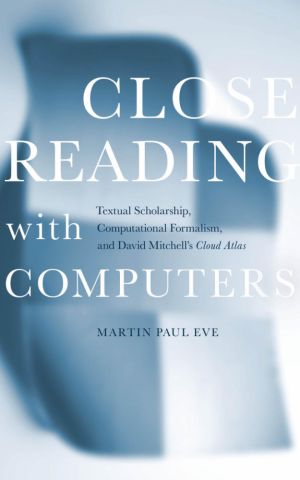Close Reading with Computers
Textual Scholarship, Computational Formalism, and David Mitchell's Cloud Atlas
by Martin Paul Eve
DescriptionTable of ContentsDetailsHashtagsReport an issue 






Book Description
Most contemporary digital studies are interested in distant-reading paradigms for large-scale literary history. This book asks what happens when such telescopic techniques function as a microscope instead. The first monograph to bring a range of computational methods to bear on a single novel in a sustained fashion, it focuses on the award-winning and genre-bending Cloud Atlas (2004). Published in two very different versions worldwide without anyone taking much notice, David Mitchell's novel is ideal fodder for a textual-genetic publishing history, reflections on micro-tectonic shifts in language by authors who move between genres, and explorations of how we imagine people wrote in bygone eras. Though Close Reading with Computers focuses on but one novel, it has a crucial exemplary function: author Martin Paul Eve demonstrates a set of methods and provides open-source software tools that others can use in their own literary-critical practices. In this way, the project serves as a bridge between users of digital methods and those engaged in more traditional literary-critical endeavors.This open book is licensed under a Creative Commons License (CC BY-SA). You can download Close Reading with Computers ebook for free in PDF format (4.4 MB).
Table of Contents
Introduction
Close Reading, Computers, and Cloud Atlas
Chapter 1
The Contemporary History of the Book
Chapter 2
Reading Genre Computationally
Chapter 3
Historical Fiction and Linguistic Mimesis
Chapter 4
Interpretation
Appendix A
Textual Variants of Cloud Atlas
Appendix B
List of Digital Data Appendixes
Book Details
Title
Close Reading with Computers
Publisher
Stanford University Press
Published
2019
Pages
271
Edition
1
Language
English
ISBN13
9781503606999
ISBN10
1503606996
ISBN13 Digital
9781503609372
ISBN10 Digital
1503609375
PDF Size
4.4 MB
License

Related Books
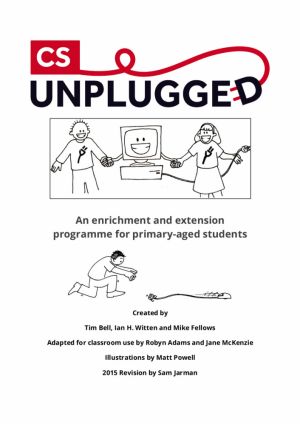
Computers are everywhere. We all need to learn how to use them, and many of us use them every day. But how do they work? How do they think? And how can people write software that is fast and easy to use? Computer science is a fascinating subject that explores these very questions. The easy and fun activities in this book, designed for studentren of...
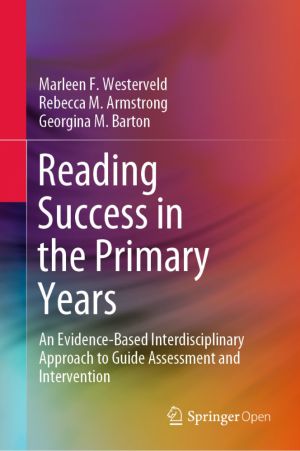
This open book describes the Reading Success project, in which a 5-step, assessment-to- intervention process, based on the Simple View of Reading, was used within a primary school setting in Australia to better support those students who struggle with reading. It provides an easily accessible overview of each step of the process involved in impleme...
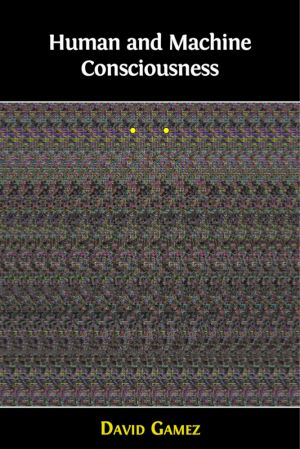
Consciousness is widely perceived as one of the most fundamental, interesting and difficult problems of our time. However, we still know next to nothing about the relationship between consciousness and the brain and we can only speculate about the consciousness of animals and machines.
Human and Machine Consciousness presents a new foundation fo...

This original edited volume takes William Blake's aphorism as a basis to explore how British Romantic literature creates its own sense of time. It considers Romantic poetry as embedded in and reflecting on the march of time, regarding it not merely as a reaction to the course of events between the late-eighteenth and mid-nineteenth centuries, ...
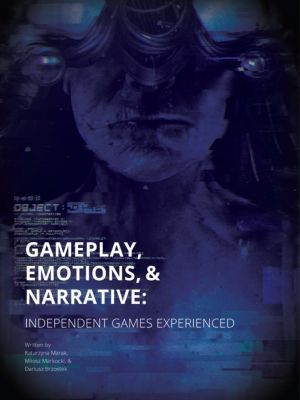
This book is devoted to emotional and narrative immersion in the experience of gameplay. The focus of our research is the complex interplay between the story and mechanics in digital games. Our goal is to demonstrate how the narrative and the ludic elements together can form unique player experiences. The volume is a collection of case studies invo...

This book presents a person-centered exploration of student profiles, using variables related to motivation to do school mathematics derived from the IEA's Trends in International Mathematics and Science Study (TIMSS) data. Statistical cluster analysis is used to identify groups of students with similar motivational profiles, across grades and...

